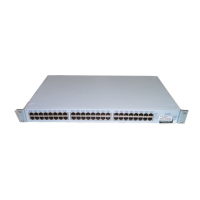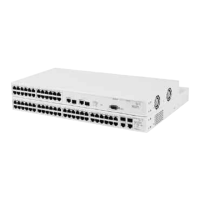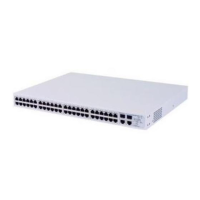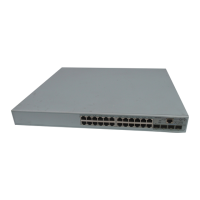18 CHAPTER 1: SWITCH FEATURES OVERVIEW
management application, the Switch can transfer these statistics to your
workstation on request or when a pre-defined threshold is exceeded.
For more information about RMON and Event Notification, see Chapter 7
“Status Monitoring and Statistics”.
Broadcast Storm
Control
Broadcast Storm Control is a system that monitors the level of broadcast
traffic on that port.
If the broadcast traffic level rises to a pre-defined
number of frames per
second (threshold), the broadcast traffic on the port
is blocked until the broadcast
traffic level drops below the threshold. This
system prevents the overwhelming broadcast traffic that can result from
network equipment which is faulty or configured incorrectly.
VLANs A Virtual LAN (VLAN) is a flexible group of devices that can be located
anywhere in a network, but which communicate as if they are on the
same physical segment. With VLANs, you can segment your network
without being restricted by physical connections — a limitation of
traditional network design. As an example, with VLANs you can segment
your network according to:
■ Departmental groups
■ Hierarchical groups
■ Usage groups
For more information about VLANs, see Chapter 8
“Setting Up Virtual
LANs”.
Automatic IP
Configuration
Your Switch can have its IP information automatically configured using a
DHCP server. Alternatively, you can manually configure the IP
information.
For more information about how the automatic IP configuration feature
works, see Chapter 9
“Using Automatic IP Configuration”.
Port Security Your Switch supports the following port security modes, which you can
set for an individual port or a range of ports:
■ No Security
Port security is disabled and all network traffic is forwarded through
the port without any restrictions.
■ Secure
